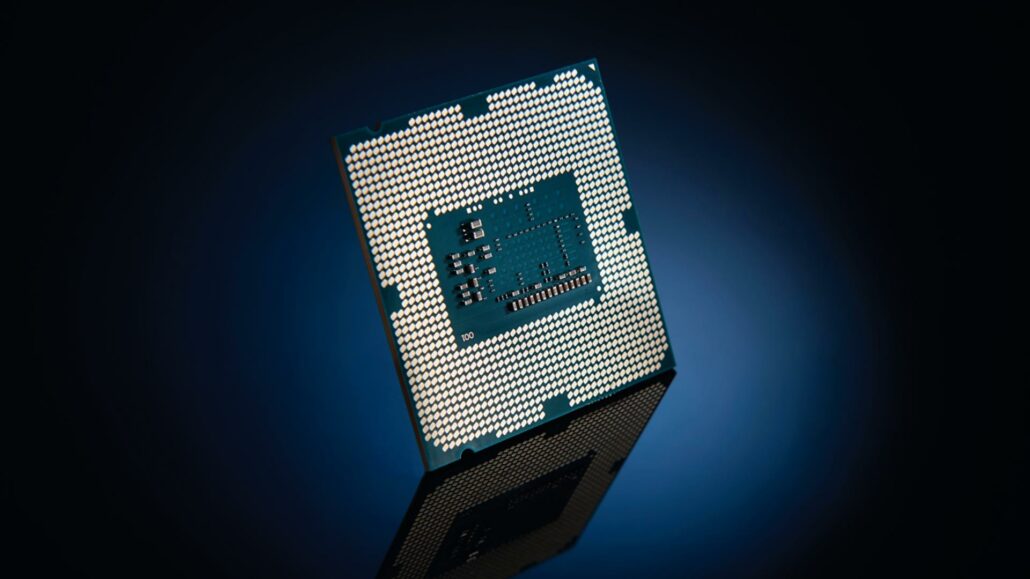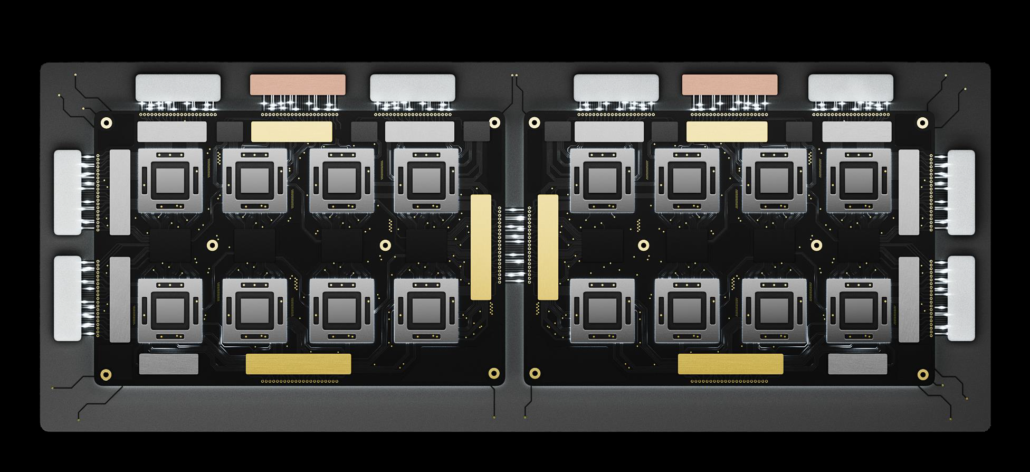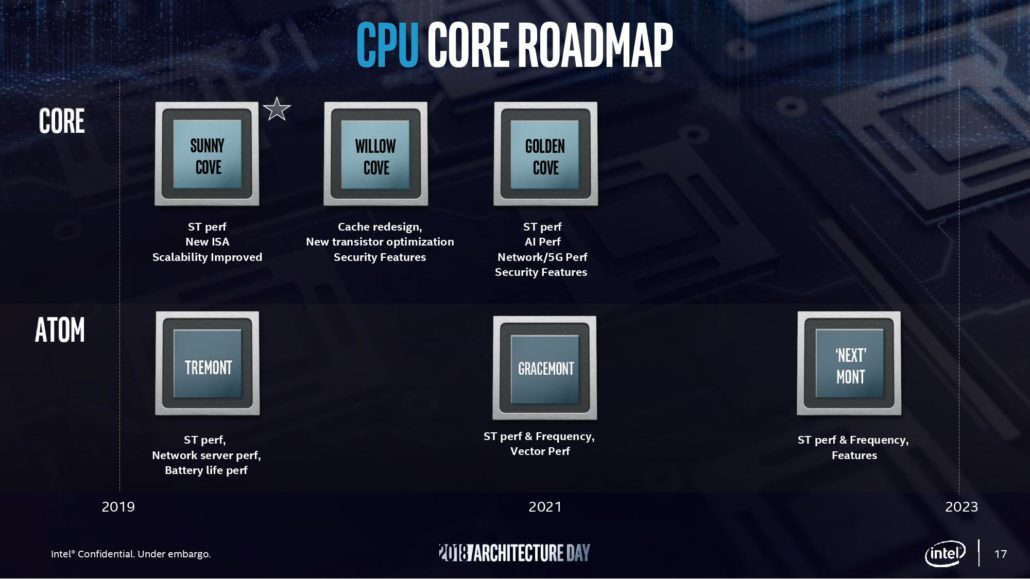
In its latest earnings presentation, Intel has revealed its plans to launch the first 10nm Desktop CPU family, codenamed Alder Lake in the second half of 2021. At the same time, Intel has confirmed the delay of its entire 7nm product portfolio, shifting by at least 6 months and a 12-month delay of the 7nm process yield.
Intel Alder Lake 10nm Desktop CPUs Confirmed For 2H 2021 While 7nm (Yield) Delayed Till 2023
Intel has confirmed within its presentation that the Intel Alder Lake line of CPUs will be based on the company’s brand new 10nm process node and will be the first desktop lineup to make use of the process node. The lineup is expected in the second half of 2021 and will be succeeding its 11th Generation Rocket Lake CPUs that are expected to arrive by the end of this year or early next year.

Following is what Intel has to say about its upcoming 10nm product portfolio which will be making up for the bulk of its next-generation lineup prior to the release of the first 7nm products in 2022-2023.
Intel is accelerating its transition to 10nm products this year with increasing volumes and strong demand for an expanding line-up. This includes a growing portfolio of 10nm-based Intel Core processors with “Tiger Lake” launching soon, and the first 10nm-based server CPU “Ice Lake,” which remains planned for the end of this year.
In the second half of 2021, Intel expects to deliver a new line of client CPU’s (code-named “Alder Lake”), which will include its first 10nm-based desktop CPU, and a new 10nm-based server CPU (code-named “Sapphire Rapids”).
The company’s 7nm-based CPU product timing is shifting approximately six months relative to prior expectations. The primary driver is the yield of Intel’s 7nm process, which based on recent data, is now trending approximately twelve months behind the company’s internal target. via Intel
The Alder Lake family will not only be the first Intel CPU family to make use of a 10nm process family but also be the first to implement a BIG.little design methodology on the desktop platform. Intel has already applied the same design strategy to its Lakefield SOCs which feature a combo of big Sunny Cove (10nm) and little Tremont Atom cores working in harmony. While Lakefield SOC is designed for the ultra-low-power platforms, the desktop chips will scale up to 125W as detailed in several leaks for the Alder Lake family which are mentioned below.
All Aboard The 10nm Train, Choo Choo!
I believe the biggest announcement of today’s earnings report isn’t that the 10nm products are on track but that the 7nm process node has been delayed by a full-blown year and now moved back to 2023. Intel has already lagged severely behind the competition (TSMC/Samsung) in offering state of the art process nodes on time and now they have announced that they are a full year behind on its next-gen 7nm process which was planned to power several key product lineups including the lead 7nm product which also happens to be Intel’s most powerful GPU to date, the Xe HPC based Ponte Vecchio.

Intel states that its 7nm plans have shifted by 6 months and yields are not expected until a full year later. Ponte Vecchio is originally expected to power the Aurora supercomputer by late 2021 so that means Intel could start pushing out its HPC GPUs even if the yields are really bad or the 2nd option could be to outsource the GPUs to a competing fab.
We’ve already heard rumors about Intel’s plan to outsource some of its GPU/CPU products to other fab powerhouses and now it looks even more credible. With that said, Intel has yet to announce any such plans so we will have to wait for their own official word on this. For now, all Intel products for 2021 are going to primarily leverage from the 10nm process node.
Here’s Everything We Know About The Next-Gen Alder Lake CPU Family
Previous details for Alder Lake-S CPUs have revealed that the next-generation desktop family is to launch sometime in late 2021 or early 2022. The Alder Lake CPUs could be the first 10nm desktop parts from Intel, featuring a hybrid architecture design.

Intel’s Alder Lake-S would be a totally different beast than anything we’ve seen from Intel yet, utilizing the 10nm++ process node which is an evolution of the 10nm+ process node (the same node used to fabricate Tiger Lake CPUs). The Alder Lake-S 12th Generation Core lineup would feature a new design methodology, supporting a mix of big and little cores as we had reported earlier. Three configurations of the Alder Lake-S CPUs were leaked which included:
- Alder Lake-S (8+8+1) 125W Config
- Alder Lake-S (8+8+1) 80W Config
- Alder Lake-S (6+0+1) 80W Config
As you can see, the CPUs will feature various configurations with a max of 8 high-performance and 8 efficiency-optimized cores. There’s the unlocked variants with 125W and locked variants with 80W TDPs. There’s also a 6 (big) core configuration which doesn’t include efficiency optimized cores but it looks like Intel plans to offer the higher end variants without the smaller cores too. While the chip design methodology isn’t anything new as we have seen several mobility SOCs feature similar core hierarchy, it would definitely be interesting to see a similar outing on a high-performance desktop CPU lineup.

With that said, the Alder Lake-S CPUs will feature support on a newer LGA 1700 socket and will feature an enhanced variant of the Xe GPU which will be available by the time of its launch. Intel is also investigating performance scaling of Alder Lake-S CPUs with TDPs as high as 150W that would be a true enthusiast desktop part, something to challenge the likes of the Ryzen 9 3950X 16 core processor in the desktop department.
The same rumor that is mentioned above also states that the Alder Lake-S CPUs will be utilizing Intel’s Golden Cove architecture to power the big cores and Gracemont, the generation after Tremont to power the Small cores. Following are some of the updates you should expect from Intel’s 2021 architecture lineup:
Intel Golden Cove (Core) Architecture:
- Improve Single-Threaded Performance (IPC)
- Improve Artificial Intelligence (AI) Performance
- Improve Network/5G Performance
- Enhanced Security Features
Intel Gracemont (Atom) Architecture:
- Improve Single-Threaded Performance (IPC)
- Improve Frequency (Clock Speeds)
- Improve Vector Performance

Golden Cove would be a big architectural jump over Willow Cove, offering an entirely new design and a range of improvements to power the bigger cores while Gracemont would do the same for Tremont, offering higher performance per watt in smaller but efficient cores. The Intel Alder Lake desktop CPUs will be competing against AMD’s Ryzen 5000 Desktop CPUs based on the Zen 4 core architecture around late 2021 or early 2022.